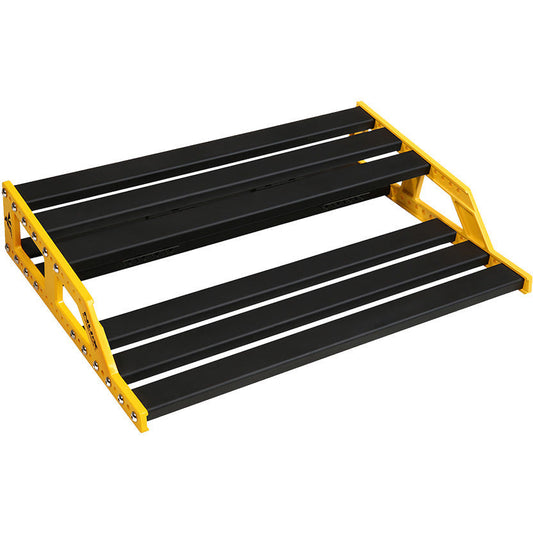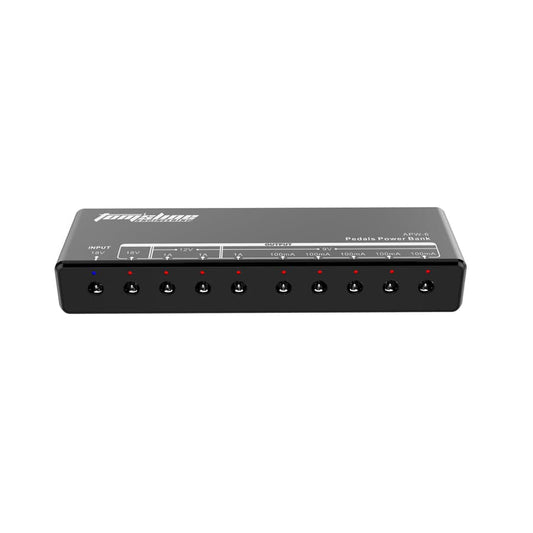Collection: Pedal Accessories
The history of guitar effects pedals is a fascinating journey that has shaped the sound of modern music. It all began in the 1960s when innovative musicians and engineers started experimenting with ways to modify the guitar's sound electronically.
One of the earliest and most influential effects pedals was the Maestro FZ-1 Fuzz Tone, released in 1962. It was designed to simulate the sound of an overdriven tube amplifier, and it quickly gained popularity after being used by iconic guitarists like Keith Richards of the Rolling Stones and Jimi Hendrix.
In the mid-1960s, the Vox Clyde McCoy Wah-Wah pedal was introduced, which allowed players to create the distinctive sweeping sound associated with funk and psychedelic rock. It became widely used by artists such as Eric Clapton and Jimi Hendrix, solidifying its place in guitar history.
Another significant development was the introduction of the Electro-Harmonix Big Muff Pi in the early 1970s. This fuzz pedal became synonymous with the heavy, saturated guitar tones of artists like David Gilmour of Pink Floyd and Billy Corgan of the Smashing Pumpkins.
The 1980s saw the rise of digital technology, leading to the emergence of digital effects pedals. The Boss DS-1 Distortion pedal, introduced in 1978, became a staple for rock and metal guitarists, including Kurt Cobain of Nirvana.
In recent years, there has been an explosion of boutique and specialized pedals catering to a wide range of tones and effects. Players like John Mayer, Jack White, and The Edge have become known for their inventive use of effects pedals, pushing the boundaries of guitar sound.
Today, there are countless effects pedals available, offering everything from classic overdrive and distortion to modulation, delay, and reverb. They continue to shape the sound of modern guitar playing, and the exploration of new pedal designs and effects is ongoing, ensuring that the history of guitar effects pedals remains a vibrant and ever-evolving story.
One of the earliest and most influential effects pedals was the Maestro FZ-1 Fuzz Tone, released in 1962. It was designed to simulate the sound of an overdriven tube amplifier, and it quickly gained popularity after being used by iconic guitarists like Keith Richards of the Rolling Stones and Jimi Hendrix.
In the mid-1960s, the Vox Clyde McCoy Wah-Wah pedal was introduced, which allowed players to create the distinctive sweeping sound associated with funk and psychedelic rock. It became widely used by artists such as Eric Clapton and Jimi Hendrix, solidifying its place in guitar history.
Another significant development was the introduction of the Electro-Harmonix Big Muff Pi in the early 1970s. This fuzz pedal became synonymous with the heavy, saturated guitar tones of artists like David Gilmour of Pink Floyd and Billy Corgan of the Smashing Pumpkins.
The 1980s saw the rise of digital technology, leading to the emergence of digital effects pedals. The Boss DS-1 Distortion pedal, introduced in 1978, became a staple for rock and metal guitarists, including Kurt Cobain of Nirvana.
In recent years, there has been an explosion of boutique and specialized pedals catering to a wide range of tones and effects. Players like John Mayer, Jack White, and The Edge have become known for their inventive use of effects pedals, pushing the boundaries of guitar sound.
Today, there are countless effects pedals available, offering everything from classic overdrive and distortion to modulation, delay, and reverb. They continue to shape the sound of modern guitar playing, and the exploration of new pedal designs and effects is ongoing, ensuring that the history of guitar effects pedals remains a vibrant and ever-evolving story.
-
NU-X Cerberus Integrated Multi-Effects & Controller, Inside Routing & IR Loader
Regular price $513.00 AUDRegular priceUnit price / per$569.00 AUDSale price $513.00 AUDEOFY Savings -

 EOFY Savings
EOFY SavingsNU-X Bumblebee Large Manageable FX Pedalboard
Regular price $234.00 AUDRegular priceUnit price / per$259.95 AUDSale price $234.00 AUDEOFY Savings -
Toms Line APW5 Rechargeable Power Bank for Pedals & Phones
Regular price $108.00 AUDRegular priceUnit price / per$109.00 AUDSale price $108.00 AUDEOFY Savings -
Toms Line APW-3 Rechargeable Power Supply
Regular price $122.00 AUDRegular priceUnit price / per$135.00 AUDSale price $122.00 AUDSold out -

 Sold out
Sold outToms Line APW6 Power Bank for Pedals
Regular price $86.00 AUDRegular priceUnit price / per$94.95 AUDSale price $86.00 AUDSold out










